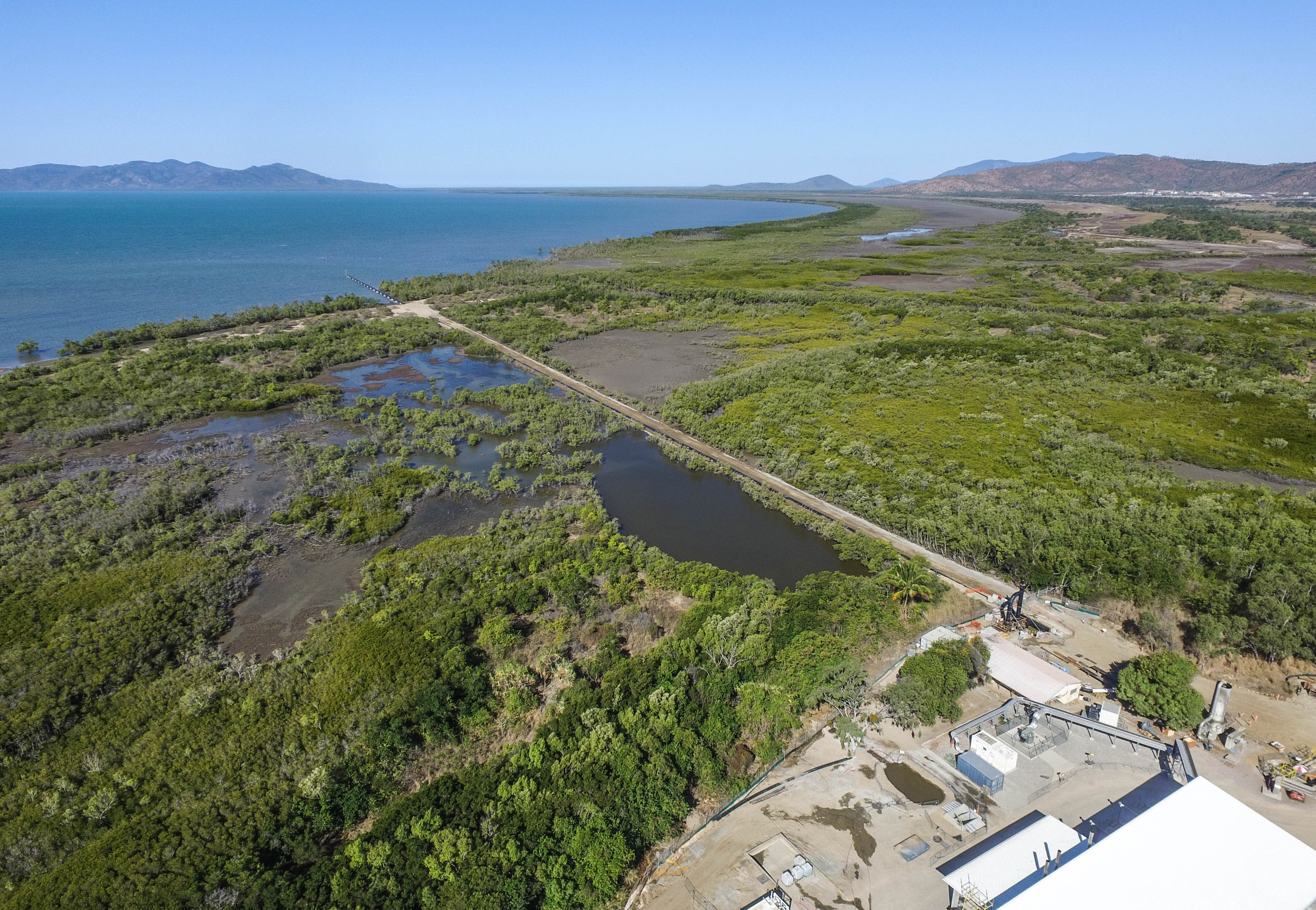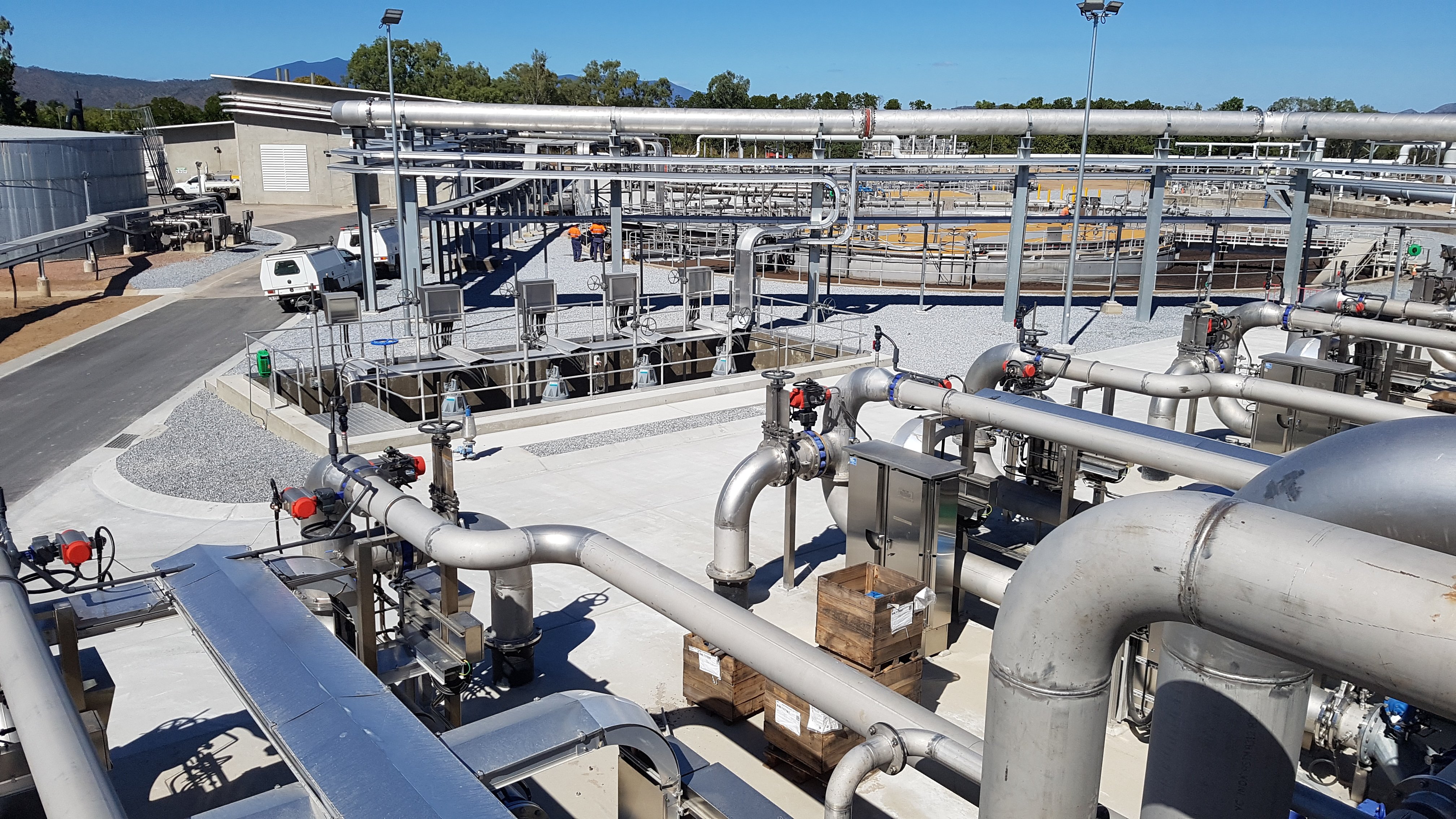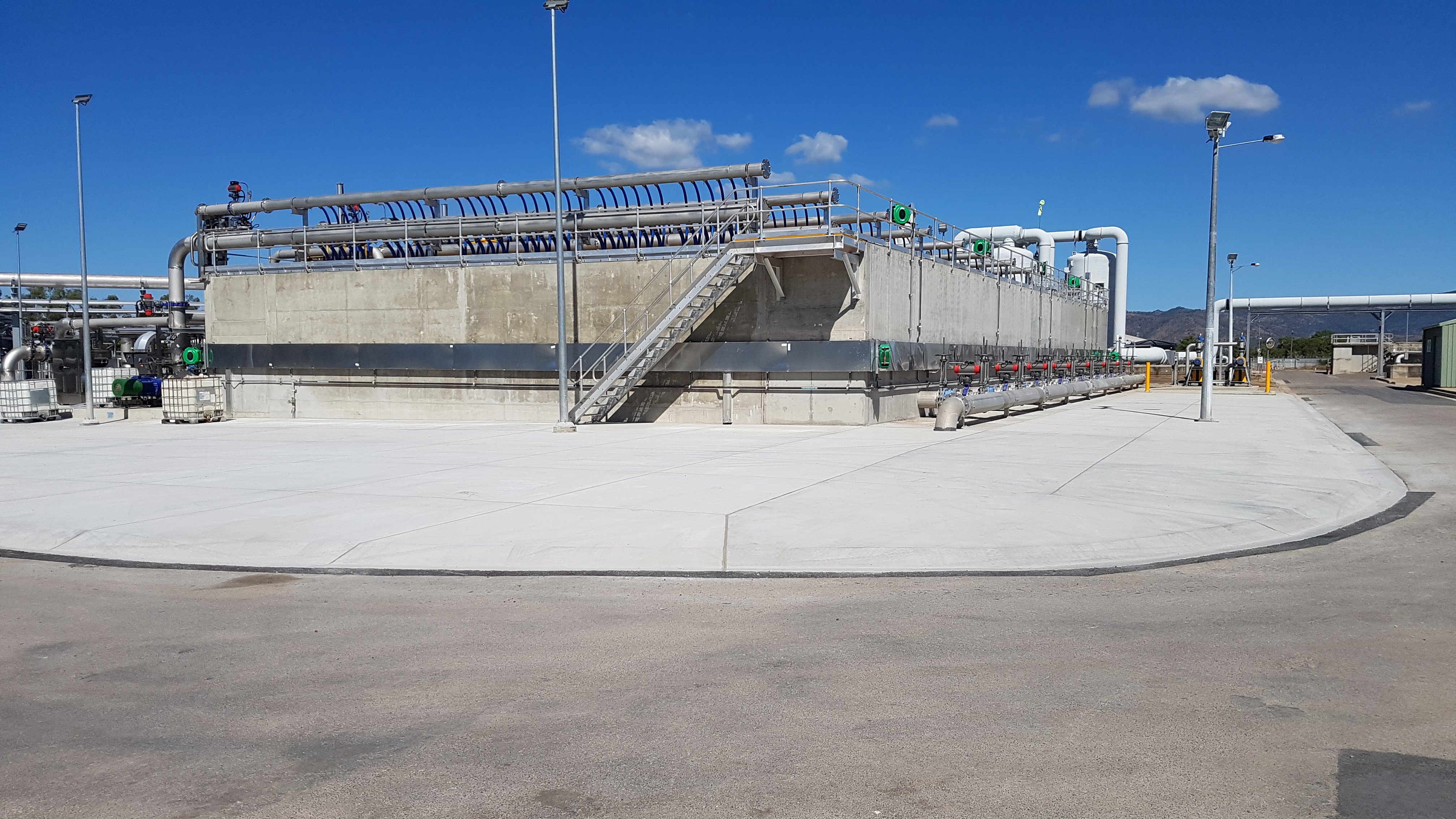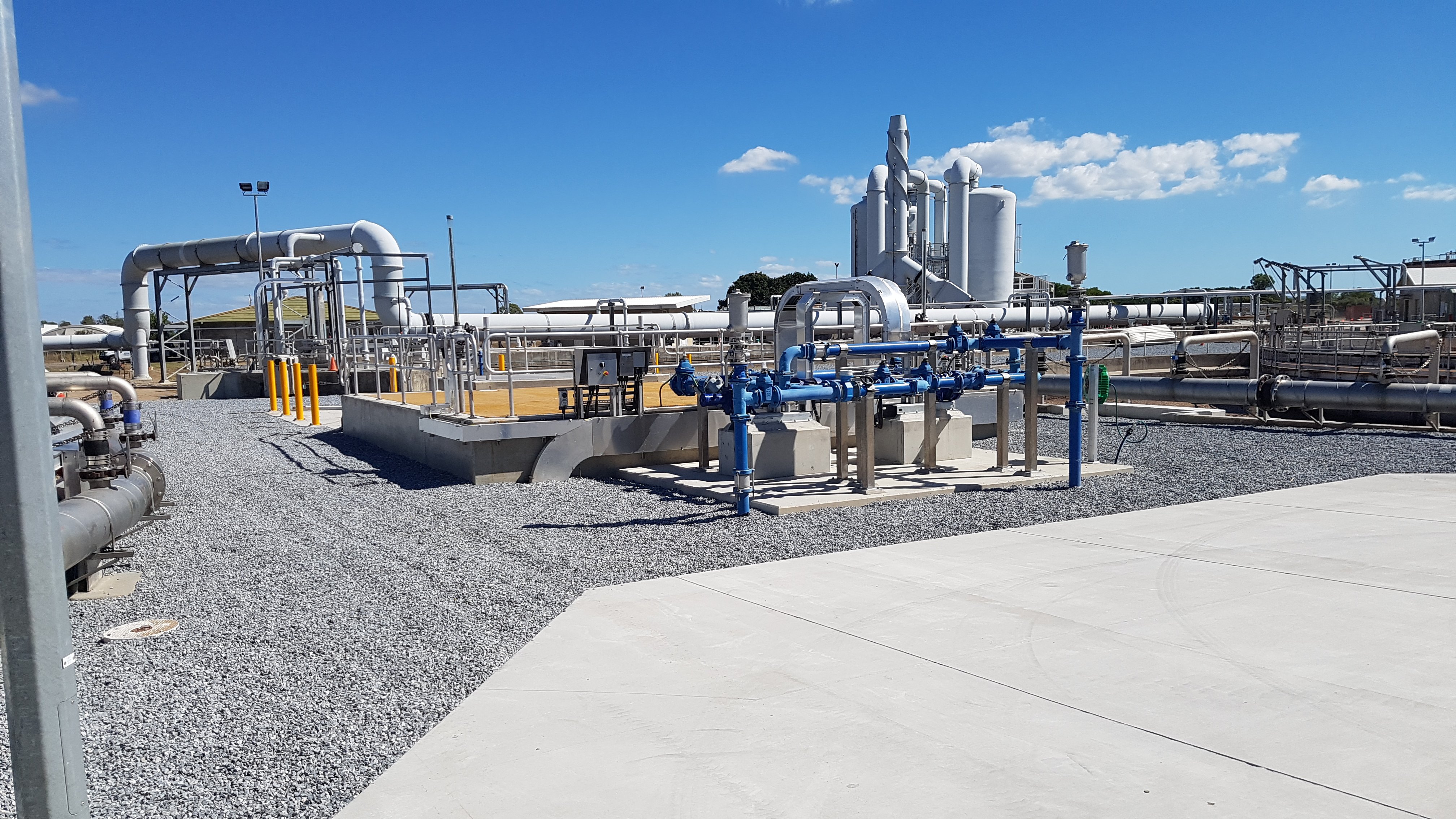Collaborating to deliver a value-driven solution for regional communities

The largest Sewage Treatment Plant in North Queensland, The Cleveland Bay Purification Plant (CBPP), is a key piece of public infrastructure for the growing Townsville region.
Constructed in 1988, the plant treats sewage from Townsville's Southern, Eastern and Western areas. In 2016, Townsville City Council recognised the need to upgrade the plant to meet industry standards and deliver better environmental and community outcomes. In collaboration with Council, AECOM, Beca HunterH2O, Monadelphous, and Evoqua have delivered an upgrade of the plant that has upheld the integrity of the environmental, social, cultural, and heritage aspects of the marine park and surrounding areas.
In 2022, the Cleveland Bay Purification Plant Process Upgrade Project was awarded the Infrastructure Project Innovation Award (Regional) at the Australian Water Association Queensland Water Awards.
The issue
Townsville City Council identified several constraints limiting the plant’s capability to meet its discharge licence obligations. In 2016, the load licence was re-negotiated with new flow, load, and concentration targets.
The plant needed a significant upgrade to increase the hydraulic and treatment capacity to achieve the revised licence requirements. The Cleveland Bay area is a Conservation Park Zone and Dugong Protection Area, and the project team sought a construction solution with minimal impact on the surrounding environment.
The upgrade of the treatment plant needed to adhere to the Department of Environment and Heritage Protection (DEHP) permit conditions and required the plant to fully treat sewage up to an instantaneous flow rate of 1,007 L/s (3 Average Dry Weather Flow) while meeting a range of effluent quality limits which included a median of 5 mg/L total nitrogen and 1 mg/L total phosphorus.
Approach
The project team used a Multi-Criteria Analysis to shortlist a preferred option for the upgrade and the construction of the outfall pipeline and engaged representatives across the Great Barrier Reef Marine Park Authority, James Cook University and the Department of Environment and Heritage Protection to undertake an independent assessment.
To upgrade the plant, AECOM and Beca HunterH2O completed significant design works, including works across the bypass and inlet, activated sludge and bioreactor, new membrane plant, replacement of the outfall pipeline, and determining the hydraulic outfall pipeline through the plant.
During the detailed design phase, the team identified a key constraint for construction works – the plant was operating at 80% load – but by taking one of the bioreactors offline during construction, the plant was at 50% capacity for up to four months, creating a high risk that the plant could exceed its quality limits during the construction period.
To manage this risk, the team used construction sequencing to drive decision-making during detailed design, with increased attention to understanding the limitations of the treatment plant’s hydraulic and treatment capacity.
A considerable amount of the existing treatment plant structure was reused to minimise construction costs. The team carefully planned this integration to maintain compliance of the treatment plant during shutdowns of treatment components. Their detailed investigation allowed the construction to be completed without breach of discharge limits.
Outcome
The upgraded CBPP delivers wastewater treatment infrastructure that is well-planned, secure, and adaptable to changes in population. The plant provides a future-proof solution for the Townsville region. The lower capital and operating cost of using existing infrastructure have brought significant cost savings of more than $50M to the community.
Keen to maximise opportunities for local businesses, the Townsville City Council included a commitment to promote local employment in the construction contract. At completion, the project achieved ~80 percent of spend within the Townsville region, using predominantly locally based suppliers and local buying behaviour practices. The detailed design phase of the upgrade was predominately undertaken in Townsville, and the co-location of the AECOM and Beca HunterH2O team allowed for a transfer of knowledge and skills between the organisations and local engineers.
Environmental considerations were a priority throughout the project, and a significantly higher environmental standard was achieved compared to the existing plant. The design can be integrated with Townsville City Council’s Effluent Reuse Strategy, with an adaptable system developed to produce high-quality recycled water that can be upgraded according to future demand. It also has the potential to be utilised as a water source for green hydrogen opportunities which could reduce demand for potable water and support an industry that lessens the reliance on fossil fuels.



